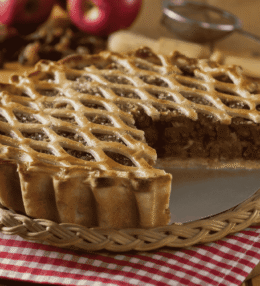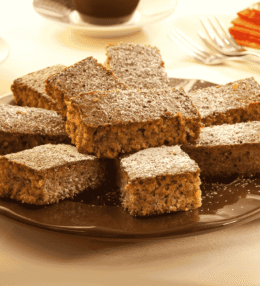
- View
Table of Contents
ToggleTurkish Pide, a delightful flatbread with a rich tradition, is much more than just bread, it’s a culinary canvas showcasing Turkey’s vibrant flavours and regional diversity.
This beloved dish is often compared to pizza, but it has a distinct personality, from its boat like shape to the vast array of toppings that reflect local ingredients and tastes.
Pide is enjoyed across Turkey, from bustling city bakeries to cosy village kitchens, offering a unique taste of Turkish hospitality and creativity.
Want to dive deeper into Turkish Cuisine? Don’t miss our post on 44 Traditional Turkish Foods to Try
What Is Pide?
Pide is a traditional Turkish flatbread known for its unique shape, soft texture, and wide range of toppings. Typically oval or boat shaped, Pide is made from a simple dough that’s rolled thin, topped with savoury ingredients, and baked in a hot stone or wood fired oven until golden and crispy along the edges.
Pide comes in many variations, from classic cheese filled options to those featuring minced meat, vegetables, or even eggs. It’s enjoyed as a snack, a meal, or a shareable appetizer, often paired with a cup of Turkish tea.
While Pide may look similar to pizza, its essence is rooted in the Turkish tradition of combining fresh, local ingredients with minimalistic but thoughtful preparation. Every region in Turkey has its own take on Pide, adding layers of flavour and character that make each version unique.
From its crust to its filling, Pide represents the Turkish appreciation for simple, flavourful ingredients that highlight the bounty of local farms and fields.
Ingredients and Taste
The dough for Pide is made with basic ingredients: flour, water, yeast, salt, and sometimes a touch of olive oil for added flavour. It’s kneaded until soft and elastic, left to rise, then rolled into an oval shape that’s perfect for holding a variety of toppings.
A hallmark of traditional Pide is its chewy, slightly crisp crust, which is achieved by baking at high heat, often in a stone oven that imparts a subtle smokiness to the bread.
The toppings vary widely, but popular choices include a mix of Turkish cheeses like kasar or beyaz peynir, minced lamb or beef with onions and spices, and fresh vegetables such as tomatoes and peppers.
Some versions are topped with sujuk (a spicy Turkish sausage), while others may have an egg cracked over the top, cooking to a soft consistency as the Pide bakes.
The taste is both comforting and complex, with flavours that range from savoury and cheesy to subtly smoky, depending on the ingredients. Each bite combines the rich taste of the filling with the rustic texture of the bread, making for a truly satisfying experience.
A Taste of History
Pide has deep roots in Turkey’s culinary history, dating back centuries as a staple in Turkish households and community bakeries. Its origin is tied to the ancient tradition of flatbreads, which were made across Central Asia and the Middle East, with each region adding its own twist.
Pide, in particular, flourished as it travelled through Anatolia, where local ingredients, spices, and baking techniques influenced its form and flavour. Traditionally, Pide was prepared in communal stone ovens, with families gathering to bake bread and Pide together, reinforcing its role as a dish of connection and community.
Each region of Turkey developed its own signature version, from the pide with spicy lamb in the southeast to the cheese focused varieties along the Black Sea coast. This regional diversity highlights Turkey’s cultural richness, with Pide acting as a culinary symbol of local pride and tradition.

Cheese and Spinach Pide (Turkish Flatbread)
Equipment
- Mixing bowls
- Measuring cups and spoons
- Dough hook or hands for kneading
- Rolling Pin
- Oven
- Baking sheet or pizza stone
- Pastry brush
Ingredients
For the Dough:
- 2 1/4 cups all-purpose flour plus extra for dusting
- 1 tsp salt
- 1 tsp sugar
- 1 tsp active dry yeast
- 3/4 cup warm water about 110°F/45°C
- 2 tbsp olive oil
For the Topping (Classic Cheese and Spinach):
- 1 cup feta cheese crumbled
- 1/2 cup mozzarella cheese shredded
- 1/2 cup fresh spinach chopped
- 1/4 tsp black pepper
- 1/4 tsp red pepper flakes optional
- 1 large egg yolk beaten (for brushing)
- 1 tsp sesame seeds optional garnish
Instructions
- To begin, activate the yeast. In a small bowl, mix the warm water with sugar and yeast. Let it sit for 5-10 minutes until frothy, ensuring the yeast is active. Meanwhile, combine the flour and salt in a large mixing bowl.
- Gradually add the yeast mixture and olive oil to the flour mixture. Using your hands or a dough hook, knead for 8-10 minutes until a soft, elastic dough forms. If the dough feels sticky, sprinkle a little more flour as needed.
- Place the dough in a lightly oiled bowl, cover with a damp cloth, and let it rise in a warm place for 1 hour or until doubled in size. Rising time is essential for a light and airy Pide.
- Preheat your oven to 475°F (245°C) and place a baking sheet or pizza stone in the oven to heat. This will create a hot surface for baking the Pide, ensuring a crispy crust.
- Once the dough has risen, punch it down to release any air bubbles. Divide the dough into four equal portions, then roll each portion into an oval shape about 1/4 inch thick on a floured surface.
- In a medium bowl, combine the feta, mozzarella, spinach, black pepper, and optional red pepper flakes. Spread an even layer of the filling onto each rolled dough oval, leaving a 1-inch border.
- Fold the edges of each dough oval over the filling to form a boat shape, pinching the ends to seal. Brush the edges with beaten egg yolk and sprinkle with sesame seeds if desired.
- Carefully transfer each Pide onto the preheated baking sheet or pizza stone. Bake for 10-12 minutes or until golden and the cheese is melted and bubbly. Serve immediately with a side of sliced lemon or fresh herbs to enhance the flavour and enjoy the pide warm, savouring each cheesy and savoury bite.






